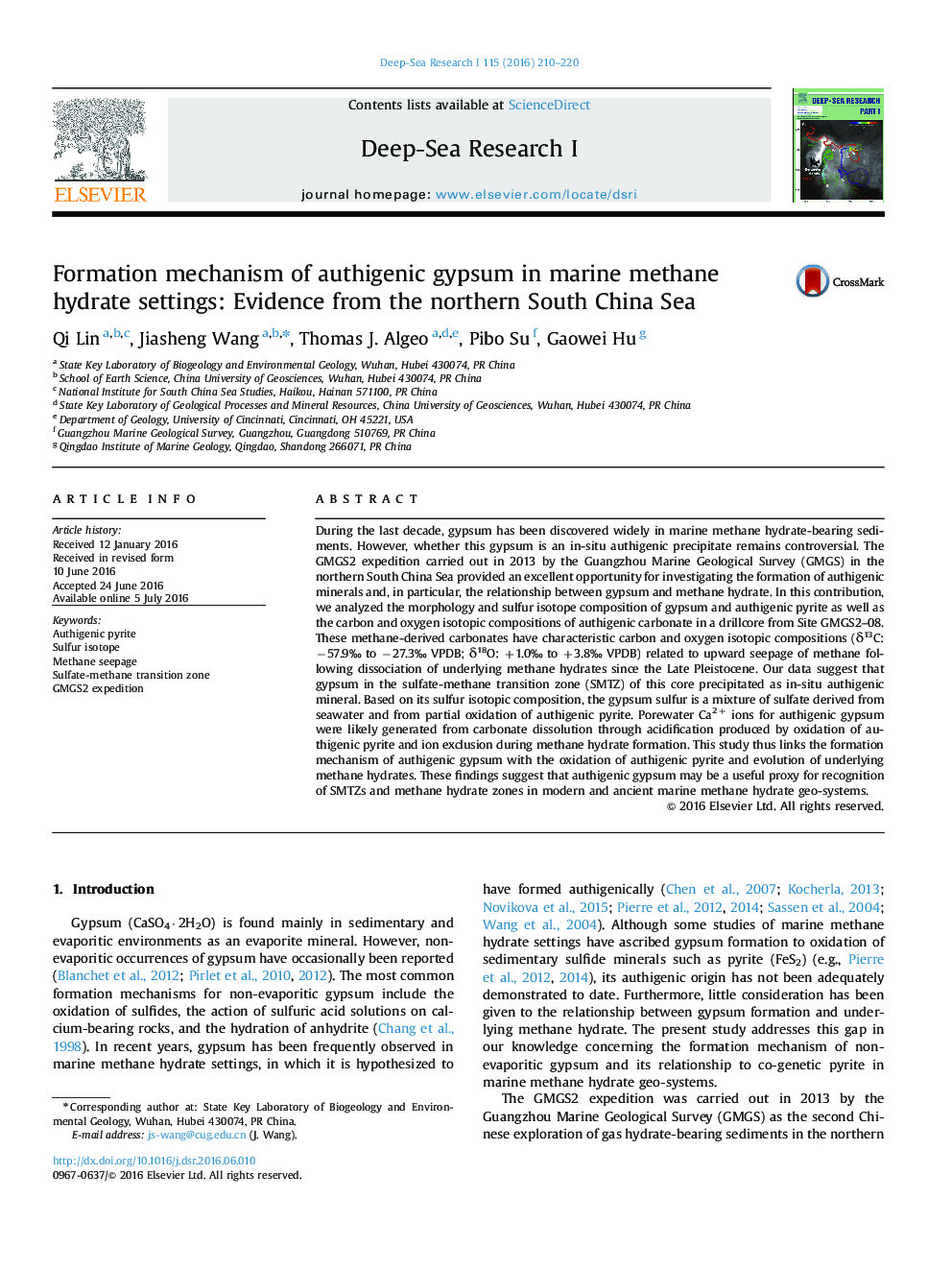| Article ID | Journal | Published Year | Pages | File Type |
|---|---|---|---|---|
| 4534422 | Deep Sea Research Part I: Oceanographic Research Papers | 2016 | 11 Pages |
•Authigenic gypsum can form in the sulfate-methane transition zone (SMTZ).•Gypsum formation is linked to higher sulfate via partial oxidation of authigenic pyrite.•Gypsum formation is linked to higher Ca2+ via methane hydrate formation below.•Authigenic gypsum provides evidence of paleo-SMTZs in methane hydrate geo-systems.
During the last decade, gypsum has been discovered widely in marine methane hydrate-bearing sediments. However, whether this gypsum is an in-situ authigenic precipitate remains controversial. The GMGS2 expedition carried out in 2013 by the Guangzhou Marine Geological Survey (GMGS) in the northern South China Sea provided an excellent opportunity for investigating the formation of authigenic minerals and, in particular, the relationship between gypsum and methane hydrate. In this contribution, we analyzed the morphology and sulfur isotope composition of gypsum and authigenic pyrite as well as the carbon and oxygen isotopic compositions of authigenic carbonate in a drillcore from Site GMGS2–08. These methane-derived carbonates have characteristic carbon and oxygen isotopic compositions (δ13C: −57.9‰ to −27.3‰ VPDB; δ18O: +1.0‰ to +3.8‰ VPDB) related to upward seepage of methane following dissociation of underlying methane hydrates since the Late Pleistocene. Our data suggest that gypsum in the sulfate-methane transition zone (SMTZ) of this core precipitated as in-situ authigenic mineral. Based on its sulfur isotopic composition, the gypsum sulfur is a mixture of sulfate derived from seawater and from partial oxidation of authigenic pyrite. Porewater Ca2+ ions for authigenic gypsum were likely generated from carbonate dissolution through acidification produced by oxidation of authigenic pyrite and ion exclusion during methane hydrate formation. This study thus links the formation mechanism of authigenic gypsum with the oxidation of authigenic pyrite and evolution of underlying methane hydrates. These findings suggest that authigenic gypsum may be a useful proxy for recognition of SMTZs and methane hydrate zones in modern and ancient marine methane hydrate geo-systems.
Graphical abstractFigure optionsDownload full-size imageDownload as PowerPoint slideFigure optionsDownload full-size imageDownload as PowerPoint slideFigure optionsDownload full-size imageDownload as PowerPoint slideFigure optionsDownload full-size imageDownload as PowerPoint slideFigure optionsDownload full-size imageDownload as PowerPoint slideFigure optionsDownload full-size imageDownload as PowerPoint slide
